The Science of Footwear - How Shoes Affect Your Health
Have you ever stopped to think about how the shoes you wear every day impact your health? It's easy to overlook this crucial aspect of our daily lives, but the truth is, our footwear plays a significant role in our overall well-being. From the moment we slip our feet into a pair of shoes, we start a journey that can either support our health or lead to a myriad of problems. In this article, we'll dive deep into the intricate relationship between footwear and health, exploring how different types of shoes can affect our feet, posture, and even our mental state. So, lace up your shoes and get ready to uncover the surprising truths about what’s beneath your feet!
To truly understand how shoes affect our health, we must first dissect their anatomy. Shoes are not just a fashion statement; they are complex structures designed to protect and support our feet. Key components include:
- Soles: The bottom part of the shoe that provides traction and absorbs shock.
- Insoles: The interior part that cushions the foot and can be customized for arch support.
- Materials: The fabrics and substances used in shoe construction, which can affect breathability and comfort.
Understanding these elements helps us appreciate how they interact with our feet. For instance, a shoe with a rigid sole may provide great support but can also restrict natural foot movement, leading to discomfort. On the other hand, soft materials might feel comfortable initially but could lack the necessary support for prolonged wear. It's a balancing act that can significantly impact our foot health.
When it comes to maintaining foot health, proper shoe fit is non-negotiable. Imagine trying to walk around in shoes that are too tight or too loose; it’s not just uncomfortable, it can lead to serious health issues. The key factors to consider include:
- Size: Shoes should fit snugly without pinching or causing blisters.
- Width: A shoe that’s too narrow can cause pressure on the sides of your feet.
- Arch Support: Proper support helps distribute weight evenly and reduces strain on your feet.
Neglecting these aspects can lead to common foot ailments, which we’ll explore next.
Improper footwear can lead to a host of foot problems that many people experience but may not connect to their choice of shoes. Some prevalent issues include:
- Bunions: Bony bumps that form at the base of the big toe, often caused by tight shoes.
- Plantar Fasciitis: Inflammation of the tissue that connects the heel to the toes, frequently linked to inadequate arch support.
- Corns: Thickened skin that develops on the feet due to friction, often from poorly fitting shoes.
Each of these conditions can significantly impact your mobility and quality of life, highlighting the importance of choosing suitable footwear.
So, how can we prevent these issues from arising? The answer lies in being proactive about our shoe choices and foot care. Here are some effective preventive measures:
- Select shoes that fit well and provide adequate support.
- Regularly check your foot health; look for any signs of discomfort or abnormalities.
- Incorporate foot exercises into your routine to strengthen muscles and improve flexibility.
By taking these steps, you can significantly enhance your overall foot health and avoid the pitfalls of improper footwear.
Recognizing when to consult a podiatrist is crucial for maintaining foot health. If you experience persistent pain, swelling, or any unusual changes in your feet, it’s time to seek professional advice. Early intervention can prevent minor issues from escalating into more serious conditions.
High heels may be a staple in many wardrobes, but they come with a hidden cost. While they can elevate an outfit, they can also wreak havoc on your posture, balance, and foot health. The elevated heel alters your natural gait, shifting weight to the balls of your feet, which can lead to:
- Increased foot pain: The pressure on the toes can lead to discomfort and long-term damage.
- Postural issues: Wearing heels regularly can cause misalignment in your spine.
- Injury risk: High heels can increase the likelihood of ankle sprains and falls.
It's essential to be mindful of the impact high heels can have on your body and to consider alternatives when possible.
When it comes to sports and exercise, the right athletic shoes can make all the difference in performance and injury prevention. Wearing shoes specifically designed for your activity can enhance your experience and protect your feet. Whether you’re running, jumping, or lifting weights, the right footwear can:
- Provide necessary support: Helps maintain proper alignment and reduces the risk of injury.
- Enhance performance: Optimized cushioning and traction can improve your speed and agility.
Choosing the right athletic shoes tailored to your activities is crucial for maximizing your performance and safeguarding your health.
When selecting athletic shoes, consider the following tips for optimal performance:
- Identify your foot type (flat, neutral, or high-arched) to find suitable support.
- Test shoes by walking or jogging in them before making a purchase.
- Consult with professionals at specialty stores who can provide personalized recommendations.
By making informed choices, you can ensure that your athletic footwear supports your fitness goals while keeping your feet healthy.
The world of footwear is constantly evolving, with innovations that enhance comfort and health outcomes. Some exciting advancements include:
- Cushioning systems: Technologies that absorb shock and provide support during activities.
- Breathable materials: Fabrics that allow moisture to escape, keeping feet dry and comfortable.
These innovations not only improve the user experience but also contribute to better foot health, making it easier to stay active and enjoy life.
1. How often should I replace my shoes?
It's recommended to replace athletic shoes every 300-500 miles, depending on usage and wear. For everyday shoes, keep an eye on signs of wear and tear.
2. Can shoes really affect my posture?
Absolutely! The right shoes help maintain proper alignment, while improper footwear can lead to postural issues and discomfort.
3. What should I look for in a good walking shoe?
Look for shoes with good arch support, cushioning, and a fit that allows for some toe movement without being too loose.
4. Are high heels ever a good choice?
While they can be stylish, it's best to limit their use and opt for more supportive footwear when possible to avoid health issues.
By understanding the relationship between footwear and health, you can make informed choices that benefit your feet and overall well-being. Remember, every step counts!
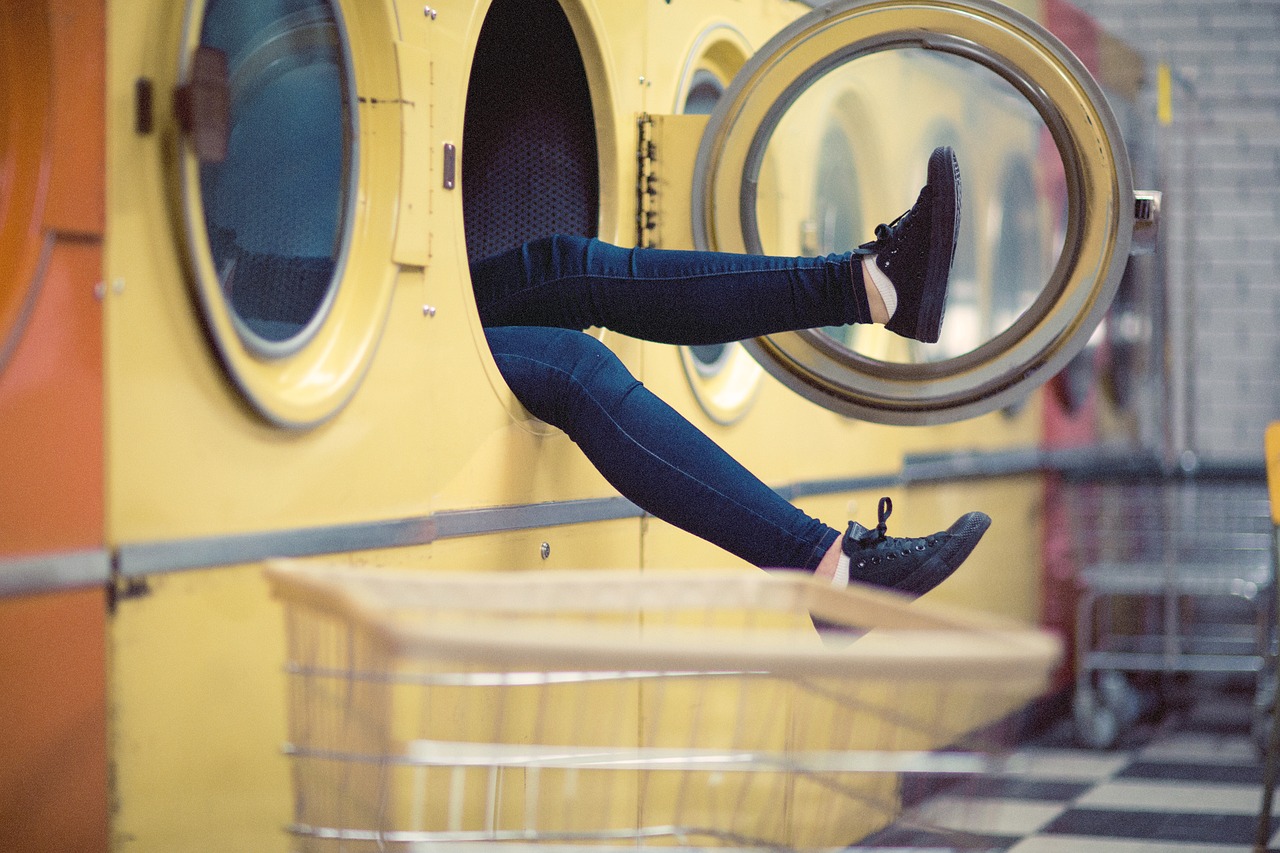
[The Anatomy of Shoes]
Understanding the anatomy of shoes is crucial for appreciating how they impact our feet and overall health. Shoes are not just fashion statements; they are complex structures designed to support and protect our feet. Each component plays a vital role in ensuring comfort, stability, and functionality. Let’s dive into the key elements that make up a shoe and how they contribute to our foot health.
At the foundation of every shoe is the sole. The sole is the part that comes into direct contact with the ground and is typically divided into three layers: the outsole, midsole, and insole. The outsoles are made from durable materials like rubber or synthetic compounds, providing traction and protection against wear and tear. The midsole, often made from foam or gel, serves as cushioning to absorb impact while walking or running. Finally, the insole, or footbed, is where your foot rests, offering additional support and comfort.
Next, let’s talk about the upper part of the shoe. This is the section that covers the top of your foot and is usually made from various materials such as leather, canvas, or synthetic fabrics. The upper not only contributes to the shoe's aesthetics but also plays a significant role in breathability and flexibility. A well-constructed upper will allow your foot to move naturally while providing adequate support.
Another critical factor is the heel. The heel height and design can significantly affect your posture and balance. A higher heel can change the way your weight is distributed, potentially leading to discomfort or pain over time. Conversely, a lower, wider heel can promote stability and comfort, making it essential to consider heel design when selecting footwear.
Moreover, arch support is a vital component that should not be overlooked. Our feet have natural arches that help distribute weight and absorb shock. Shoes with proper arch support can help prevent issues like flat feet or high arches, which can lead to discomfort and other foot problems. When trying on shoes, it’s essential to assess whether they provide adequate support for your unique foot shape.
In summary, the anatomy of shoes is intricate and essential for our foot health. Understanding the various components, from the sole to the upper, heel, and arch support, can help you make informed choices when it comes to footwear. Remember, the right pair of shoes can make all the difference, not just in your comfort but also in your overall well-being.
- What is the most important feature to look for in shoes? The most important feature varies by individual, but generally, proper fit and arch support are crucial for foot health.
- How often should I replace my shoes? It's advisable to replace athletic shoes every 300-500 miles of use or when they show signs of wear and tear.
- Can wearing the wrong shoes cause long-term damage? Yes, improper footwear can lead to chronic foot problems, including pain and deformities.

[Foot Health and Shoe Fit]
When it comes to maintaining foot health, the fit of your shoes is absolutely paramount. Imagine trying to run a marathon in shoes that are two sizes too small or too big. Not only would that be uncomfortable, but it could also lead to serious injuries. Proper shoe fit involves several key factors: length, width, and arch support. Each of these elements plays a crucial role in ensuring that your feet are well-supported and comfortable.
The first thing to consider is the length of the shoe. Your toes should have enough room to wiggle freely without feeling cramped. A general rule of thumb is to have about a thumb's width of space between your longest toe and the end of the shoe. This extra space is not just for comfort; it also allows for natural foot movement, especially when you're walking or running.
Next, let's talk about width. Many people overlook this aspect, but shoes that are too narrow can cause a host of problems, including blisters and corns. Conversely, shoes that are too wide can lead to instability, making it easier to trip or fall. To find the right width, you should feel snugness without tightness. If you find yourself constantly adjusting your shoes or feeling like they might slip off, it’s a sign that you might need a different width.
Now, we can't ignore the importance of arch support. Our feet come in all shapes and sizes, and the arch is a significant factor in determining how well a shoe fits. For example, those with flat feet may require more support to prevent overpronation, while those with high arches may need cushioning to absorb impact. A well-fitted shoe should support the natural curve of your foot, promoting better alignment and reducing strain on your body.
To summarize the essentials of shoe fit, consider the following table:
| Factor | Importance |
|---|---|
| Length | Prevents cramping and allows for natural movement |
| Width | Ensures stability and prevents blisters |
| Arch Support | Promotes alignment and reduces strain on feet and body |
Choosing the right shoes is not just about style; it’s about health and comfort. Poorly fitting shoes can lead to a variety of foot ailments, including bunions, plantar fasciitis, and other painful conditions. These issues often arise from a lack of support or inappropriate shoe types for specific activities. Therefore, it’s essential to invest time in finding the right fit.
Furthermore, regular foot care practices can contribute significantly to maintaining foot health. This includes keeping your feet clean and dry, trimming toenails properly, and moisturizing to prevent dry skin. Remember, your feet are your foundation; taking care of them will support your overall health and well-being.
In conclusion, the relationship between foot health and shoe fit cannot be overstated. By paying attention to the length, width, and arch support of your footwear, you can avoid common foot problems and enhance your overall comfort. So, the next time you’re shopping for shoes, keep these factors in mind and give your feet the love they deserve!
- How often should I get my feet measured for shoe size? It's a good idea to measure your feet every time you buy new shoes, as sizes can change over time due to factors like age and weight.
- What are the signs that my shoes don't fit properly? Look for signs like foot pain, blisters, or calluses, which can indicate that your shoes are too tight or too loose.
- Can I use insoles to improve shoe fit? Yes, insoles can provide additional support and cushioning, making shoes more comfortable and better fitting.
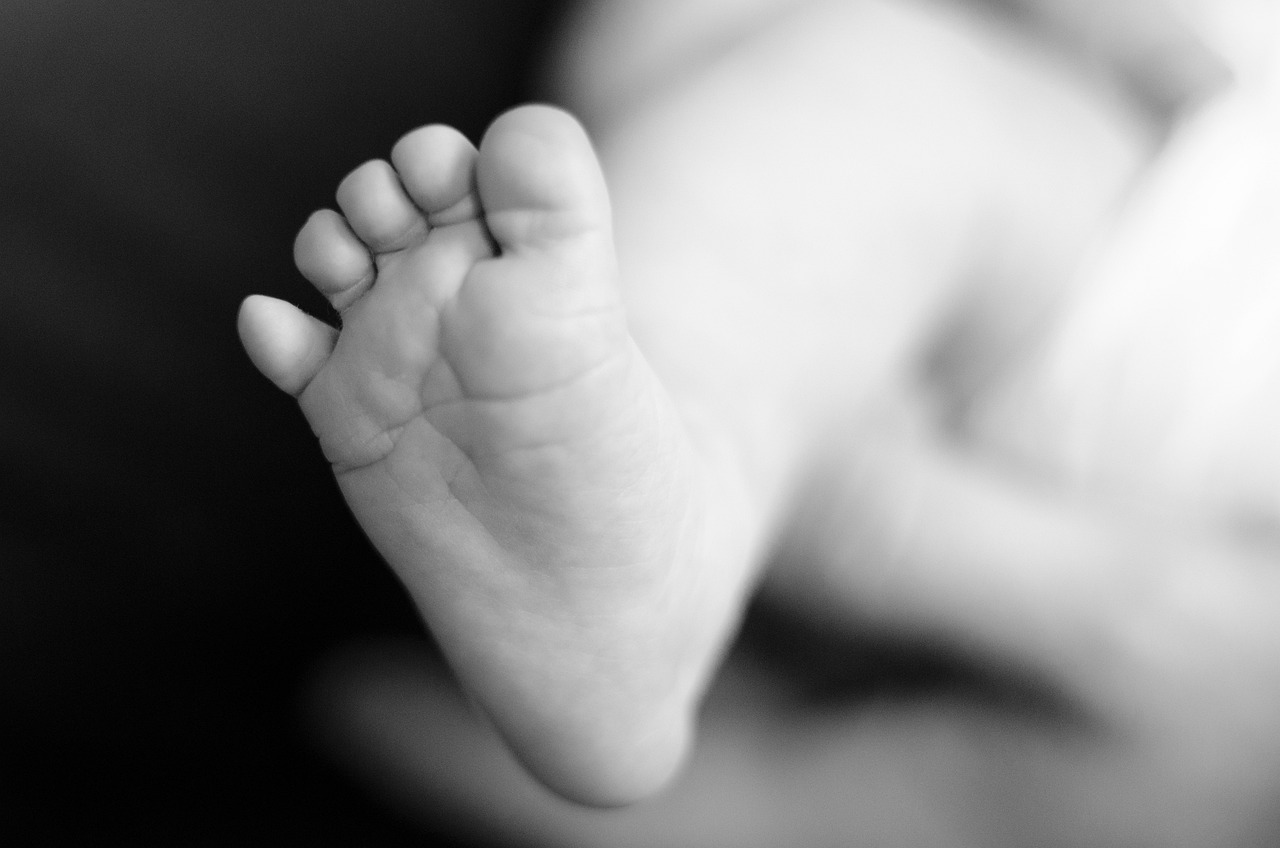
[Common Foot Problems]
Our feet are incredible structures, designed to support our entire body weight and allow us to move freely. However, when we don’t pay adequate attention to our footwear choices, we can inadvertently invite a variety of foot problems that can lead to discomfort and pain. Some of the most common foot ailments include bunions, plantar fasciitis, and corns. Understanding these issues is essential for maintaining foot health and overall well-being.
Bunions are one of the most prevalent foot problems, characterized by a bony bump that forms at the base of the big toe. This deformity often results from wearing shoes that are too tight or narrow, pushing the big toe toward the other toes. Not only do bunions cause significant discomfort, but they can also lead to other issues like arthritis over time. The best way to prevent bunions is to choose shoes that offer ample room for your toes to move freely.
Plantar fasciitis is another common condition that many people experience, especially those who spend long hours on their feet. This condition occurs when the plantar fascia, a thick band of tissue that runs across the bottom of the foot, becomes inflamed. Symptoms typically include stabbing pain near the heel, especially in the morning. To alleviate this pain, it’s crucial to wear shoes with proper arch support and cushioning, which can help distribute weight evenly and reduce strain on the plantar fascia.
Corns are hardened areas of skin that develop on the feet due to friction and pressure, often caused by ill-fitting shoes. They can be painful and unsightly, making it uncomfortable to walk. The best prevention method is to keep your feet dry and wear shoes that fit well. If corns do develop, over-the-counter treatments and regular foot care can help manage the discomfort.
In addition to these common issues, there are a few other foot problems worth mentioning, such as flat feet and high arches. Both conditions can lead to various complications, including pain in the feet, legs, and back. It’s essential to choose footwear that accommodates your specific foot type. For those with flat feet, shoes with good arch support and stability are vital, while individuals with high arches might benefit from extra cushioning.
To summarize, the relationship between footwear and foot health is undeniable. Choosing the right shoes can prevent many common foot problems and enhance your overall quality of life. If you notice any persistent discomfort or changes in your feet, it’s crucial to consult a professional for advice tailored to your situation. Remember, your feet are the foundation of your body; taking care of them is not just important—it's essential!
- What are the best types of shoes to prevent foot problems? Look for shoes with good arch support, proper cushioning, and a wide toe box to allow your toes to move freely.
- How can I tell if my shoes are the right fit? Your shoes should feel comfortable without pinching or rubbing against any part of your foot. Always try shoes on at the end of the day when your feet are slightly swollen.
- When should I see a podiatrist? If you experience persistent foot pain, changes in foot shape, or any discomfort that doesn’t improve with proper footwear, it’s time to seek professional help.
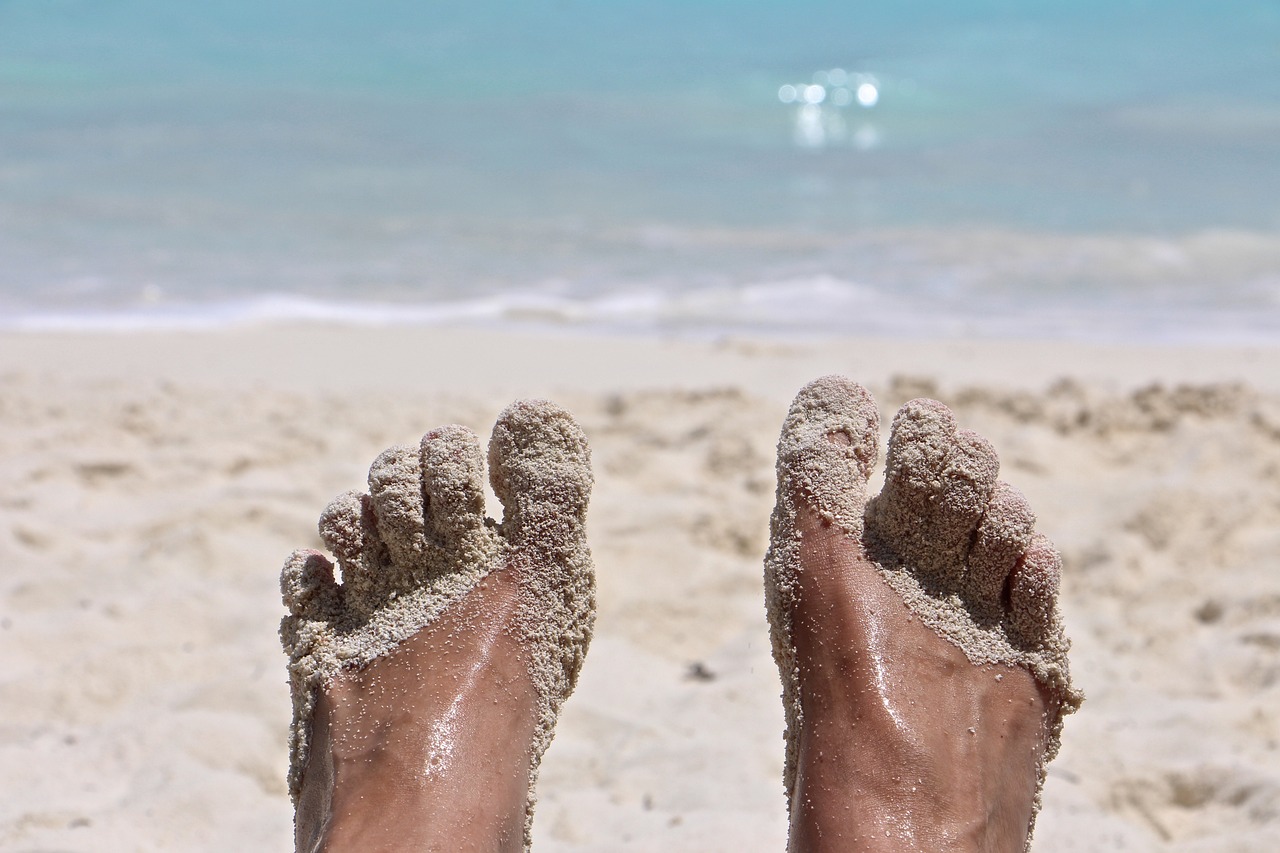
[Preventive Measures]
When it comes to maintaining foot health, prevention is always better than cure. Taking proactive steps can significantly reduce the risk of developing painful foot conditions that can hinder your daily activities. One of the most important measures is to choose the right footwear. This means selecting shoes that fit well and provide adequate support. A shoe that is too tight can lead to blisters and bunions, while a shoe that is too loose can cause instability and increase the risk of injuries.
Additionally, regular foot care practices can enhance overall foot health. This includes keeping your feet clean and dry, trimming your toenails properly, and moisturizing to prevent dry skin. It's also crucial to pay attention to any discomfort you might feel while wearing shoes. If you notice any persistent pain, it might be time to reassess your footwear choices.
Another preventive measure is to incorporate foot exercises into your routine. Strengthening the muscles in your feet can improve balance and support. Simple exercises such as toe curls, ankle rotations, and stretching can do wonders for your foot health. Here’s a quick list of exercises you can try:
- Toe curls: Sit in a chair and place a towel on the floor. Use your toes to scrunch the towel toward you.
- Ankle rotations: While seated, lift one foot off the ground and rotate your ankle in circular motions.
- Calf stretches: Stand facing a wall, place your hands on the wall, and step back with one leg, keeping it straight while bending the front knee.
Moreover, it’s advisable to replace your shoes regularly. Over time, shoes lose their cushioning and support, which can lead to discomfort and injuries. A good rule of thumb is to replace athletic shoes every 300 to 500 miles, depending on your activity level. Keeping track of your shoe mileage can help you stay ahead of any potential foot issues.
Lastly, consider seeking professional advice when necessary. If you’re unsure about the right type of shoe for your foot type or activity level, consulting with a podiatrist can provide valuable insights. They can recommend specific footwear that caters to your unique needs, ensuring that you maintain optimal foot health.
Q: How can I tell if my shoes fit properly?
A: Your shoes should fit snugly but not tightly. You should have about a thumb's width of space between your longest toe and the front of the shoe, and your heel should not slip out when walking.
Q: What are the signs that I need new shoes?
A: Look for visible signs of wear, such as uneven soles, cracks in the material, or a lack of cushioning. If you experience discomfort or pain during activities, it may also be time for new footwear.
Q: Can foot exercises really help prevent injuries?
A: Absolutely! Foot exercises strengthen the muscles in your feet, improve flexibility, and enhance balance, all of which contribute to reducing the risk of injuries.
Q: When should I see a podiatrist?
A: If you experience persistent pain, swelling, or any unusual changes in your feet, it’s wise to consult a podiatrist. Early intervention can prevent more serious issues down the line.
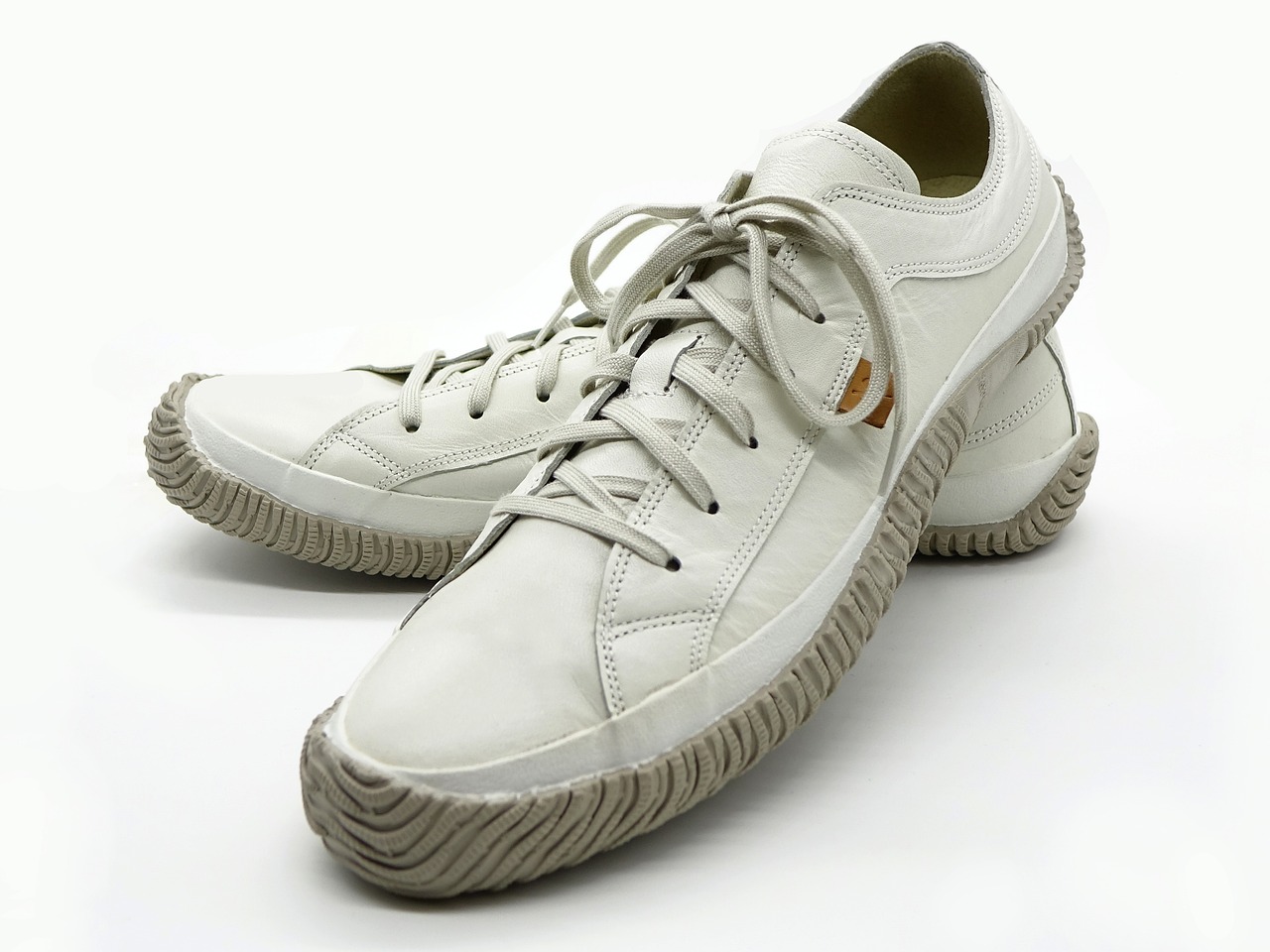
[When to Seek Professional Help]
Knowing when to seek professional help for foot-related issues is crucial for maintaining your overall health. Many people often dismiss foot pain as a minor inconvenience, but ignoring these signals can lead to more significant problems down the line. So, when should you pick up the phone and call a podiatrist? Here are some key indicators:
- Persistent Pain: If you experience foot pain that lasts longer than a few days, it's time to consult a professional. Chronic pain can indicate underlying conditions that need attention.
- Swelling or Inflammation: Swelling that doesn't subside with rest or ice could be a sign of injury or other serious issues.
- Changes in Foot Shape: If you notice any deformities or changes in the shape of your feet, such as bunions or hammertoes, these should be evaluated by a specialist.
- Difficulty Walking: Struggling to walk or bear weight on your feet is a clear sign that something is wrong and requires immediate attention.
- Skin Changes: Any unusual changes in the skin on your feet, like discoloration, excessive dryness, or the appearance of sores, should be assessed by a healthcare provider.
Additionally, if you have existing health conditions such as diabetes or arthritis, regular foot check-ups with a podiatrist are essential. These conditions can significantly affect foot health, and a professional can help manage any complications that arise. They can also provide tailored advice on suitable footwear that accommodates your specific health needs.
In summary, don't wait for foot problems to escalate. If you notice any of the signs mentioned above or have ongoing concerns about your foot health, seeking professional help is the best course of action. Remember, your feet are the foundation of your body; taking care of them is paramount to your overall well-being.
Here are some commonly asked questions regarding foot health and when to seek professional help:
- What are the signs that I need to see a podiatrist? Look for persistent pain, swelling, changes in foot shape, difficulty walking, or skin changes.
- How often should I have my feet checked? If you have diabetes or other chronic conditions, it's advisable to have your feet checked at least once a year. Otherwise, regular self-examinations can help you catch any issues early.
- Can foot problems be prevented? Yes, wearing the right shoes, maintaining foot hygiene, and addressing any minor issues promptly can help prevent more serious problems.
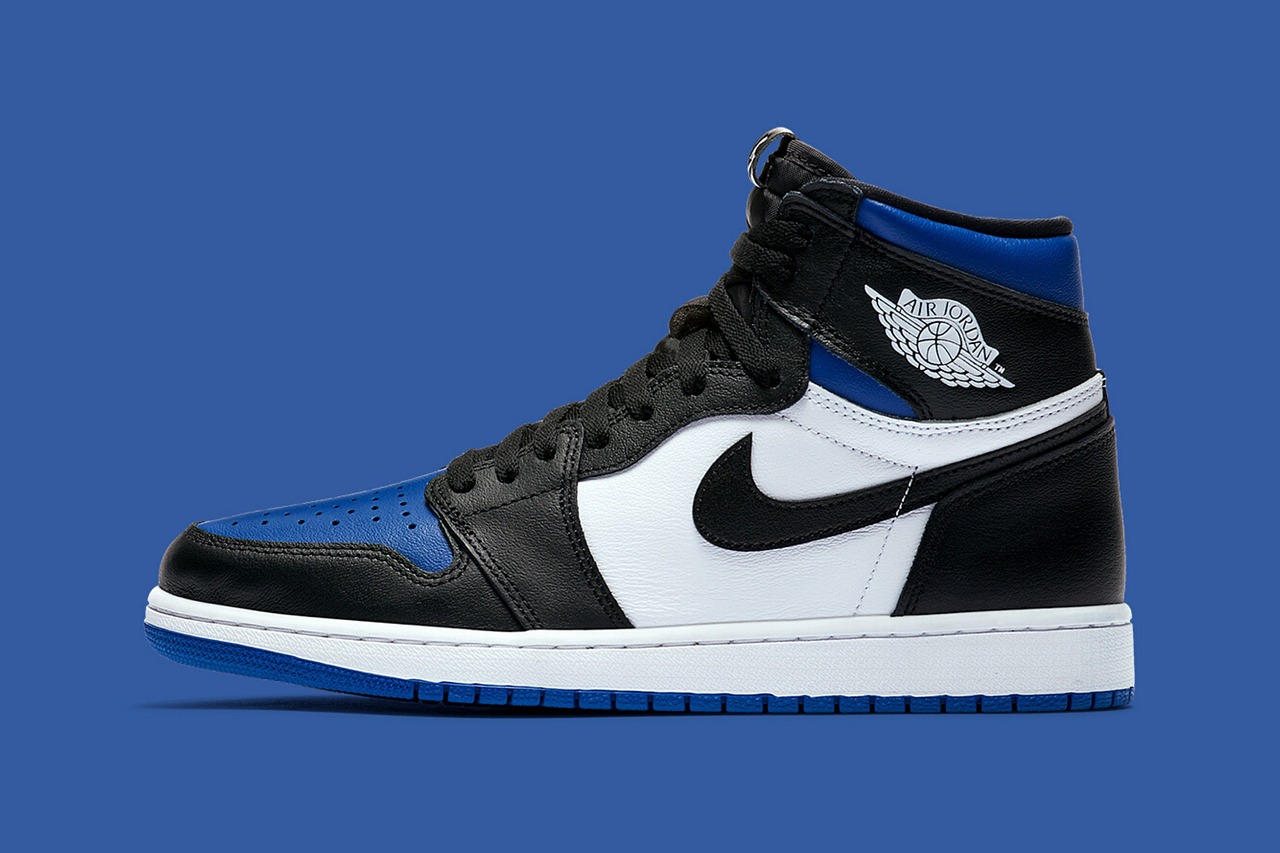
[The Impact of High Heels]
High heels are often seen as a symbol of elegance and sophistication, but beneath their stylish exterior lies a world of potential health hazards. When we slip into a pair of heels, we may feel an instant boost in confidence and allure, yet our feet—and ultimately our bodies—may pay a hefty price. The elevated position of the foot can lead to a cascade of issues that affect not just our feet, but our entire posture and balance.
Firstly, let's talk about posture. Wearing high heels alters the natural alignment of our spine. When the heel is elevated, the pelvis tilts forward, which can lead to an exaggerated curve in the lower back. This misalignment can cause discomfort and may lead to chronic pain over time. Imagine your body as a house; if the foundation is off-kilter, the entire structure becomes unstable. Similarly, when your posture is compromised due to high heels, it affects your overall body mechanics.
Moreover, high heels can significantly impact balance. With a smaller surface area to support your weight, the likelihood of stumbling or falling increases. This is especially concerning for women who wear heels regularly, as they may develop a reliance on these shoes that can lead to weakened ankle stability. Think of it this way: when you walk on a tightrope, every slight shift can send you tumbling. High heels create that same precarious situation for our feet.
Another pressing issue is the type of foot pain that can arise from prolonged heel wear. Conditions such as metatarsalgia (pain in the ball of the foot), plantar fasciitis, and even neuromas (growth of nerve tissue) can be exacerbated by high heels. The pressure placed on the forefoot can lead to inflammation and discomfort, making everyday activities a challenge. It's like trying to walk on a bed of nails; the discomfort can be unbearable, yet many women choose to endure it for the sake of fashion.
In addition to these issues, the aesthetics of high heels often come at the expense of foot health. Many high-heeled shoes are designed with narrow toe boxes, which can cramp the toes and lead to deformities such as bunions and hammer toes. These conditions not only cause pain but can also require surgical intervention in severe cases. It's essential to remember that while a beautiful shoe may catch the eye, it shouldn't come at the cost of your foot's well-being.
So, what can be done to mitigate these risks? Here are a few tips:
- Limit Wear: Try to reserve high heels for special occasions rather than daily wear.
- Choose Wisely: Opt for heels with a lower height and a wider toe box to reduce pressure on the feet.
- Take Breaks: If you must wear heels, give your feet a break by switching to flats during the day.
- Foot Care: Regularly stretch and strengthen your feet to counteract the effects of high heels.
In conclusion, while high heels can elevate our style, they can also lead to significant health issues. It's crucial to be mindful of the impact they have on our bodies and to make informed choices about our footwear. Remember, true elegance comes not just from how we look, but also from how we feel.
- Are high heels bad for your feet? Yes, they can lead to various foot problems, including pain and deformities.
- How often should I wear heels? It's best to limit high heel wear to special occasions and opt for more supportive footwear for daily use.
- What can I do to relieve foot pain from heels? Stretching, using orthotic inserts, and alternating with more comfortable shoes can help alleviate pain.
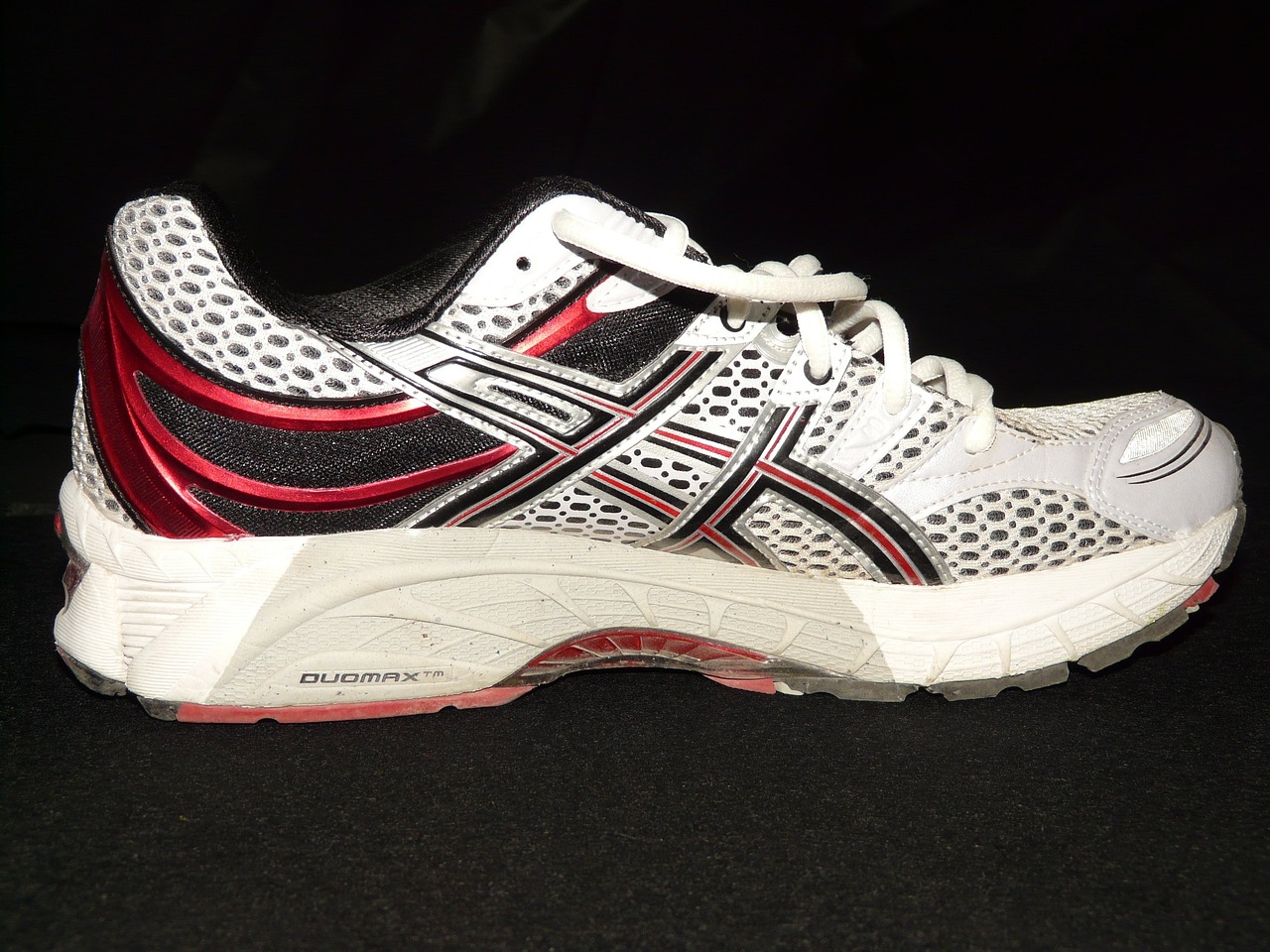
[Athletic Shoes and Performance]
When it comes to sports and exercise, the right footwear can be the difference between a stellar performance and an injury that sidelines you for weeks. Athletic shoes are specifically designed to cater to the unique demands of various sports and physical activities. Whether you're hitting the pavement for a run, playing basketball, or practicing yoga, understanding how athletic shoes impact your performance is crucial. They not only provide support and protection but also enhance your overall experience.
One of the most significant aspects of athletic shoes is their ability to absorb shock. This is especially important during high-impact activities like running or jumping. The cushioning systems in modern athletic shoes are engineered to reduce the stress on your joints, which can help prevent injuries over time. For instance, running shoes typically feature a thicker sole with specialized materials that compress upon impact and then rebound, giving you that extra bounce in your step. It's like having a mini trampoline under your feet!
Another factor to consider is the traction provided by athletic shoes. Different sports require different types of grip. For example, soccer cleats are designed with pointed studs to dig into the grass, providing stability during quick movements. On the other hand, basketball shoes have a flat, rubber sole that offers excellent grip on the court. Choosing the right shoe for your specific activity can significantly affect your performance and safety. Imagine trying to sprint on a basketball court in running shoes; you'd likely find yourself slipping and sliding all over the place!
Furthermore, the fit of athletic shoes is paramount. A well-fitting shoe will not only enhance your performance but also reduce the risk of blisters and other foot issues. When trying on athletic shoes, it's essential to pay attention to the following:
- Make sure there’s about a thumb's width of space between your longest toe and the front of the shoe.
- The heel should fit snugly without slipping.
- Test the shoes by walking or jogging in them to ensure comfort and support.
In addition to fit, the breathability of athletic shoes plays a role in performance. Shoes made from breathable materials allow for better air circulation, helping to keep your feet cool and dry. This is particularly beneficial during intense workouts when your feet are likely to sweat. A shoe that traps moisture can lead to discomfort and even fungal infections. Think of breathable shoes as your feet's best friend, keeping them happy and healthy while you push your limits.
Lastly, let’s not forget about the importance of choosing the right athletic shoes based on your foot type. There are three main categories of foot types: neutral, overpronated, and underpronated. Each type requires specific features in footwear to provide optimal support and performance. For instance, those with flat feet might benefit from shoes with additional arch support, while those with high arches may need more cushioning. Understanding your foot type can empower you to make informed decisions, ultimately enhancing your athletic performance.
Q: How often should I replace my athletic shoes?
A: It’s generally recommended to replace your athletic shoes every 300 to 500 miles, depending on the type of shoe and your running style. If you notice signs of wear, such as a lack of cushioning or uneven tread, it’s time for a new pair.
Q: Can wearing the wrong athletic shoes lead to injuries?
A: Absolutely! Wearing shoes that don’t fit properly or aren’t suited for your specific activity can lead to various injuries, including plantar fasciitis, shin splints, and knee pain.
Q: What should I look for when buying running shoes?
A: Key factors include the fit, level of cushioning, support (especially for your arch), and breathability. It’s also helpful to try them on at the end of the day when your feet are slightly swollen for a more accurate fit.
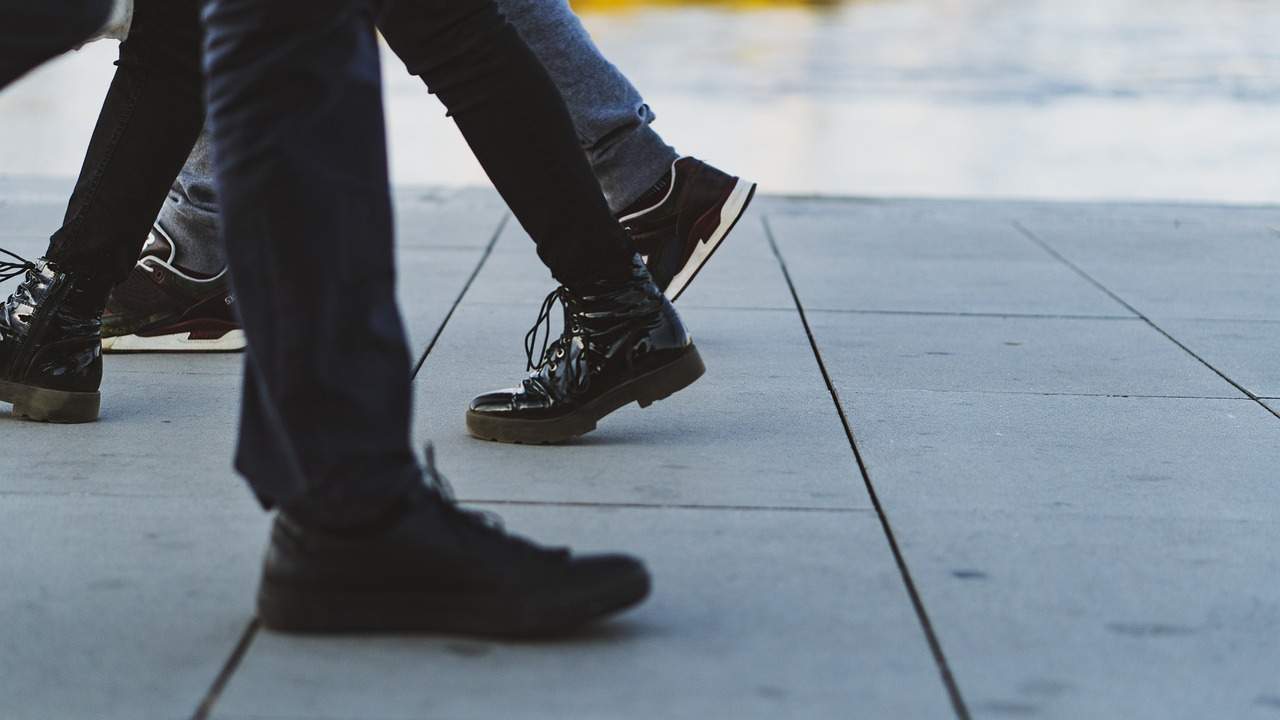
[Choosing the Right Athletic Footwear]
When it comes to athletic footwear, making the right choice can feel overwhelming. With so many brands, styles, and features available, how do you know what’s best for you? The truth is, the right pair of shoes can make all the difference in your performance and overall comfort. Think of your shoes as the foundation of your athletic endeavors; just as a house needs a solid base to stand tall, your feet need the right support to excel.
First and foremost, consider the type of activity you’ll be engaging in. Whether you're a runner, a basketball player, or a casual gym-goer, the demands on your feet will vary. For example, running shoes are designed with cushioning and support that absorb impact, while basketball shoes offer enhanced ankle support and traction for quick lateral movements. It’s crucial to choose footwear that complements your specific sport to avoid injuries and enhance your performance.
Next, let's talk about fit. A shoe that fits well is non-negotiable. It should feel snug but not cramped, allowing your toes to wiggle freely. To ensure you get the right size, try shoes on at the end of the day when your feet are slightly swollen. This way, you can avoid the discomfort of shoes that feel fine in the morning but pinch by evening. Remember, different brands can have varying sizing, so always try before you buy!
Moreover, pay attention to your foot type. Do you have flat feet, high arches, or a neutral arch? Understanding your foot's structure is essential for finding shoes that provide the right support. Many athletic stores offer gait analysis to help you determine your foot type and recommend suitable footwear. Here’s a quick guide:
| Foot Type | Recommended Shoe Features |
|---|---|
| Flat Feet | Stability shoes with arch support |
| High Arches | Cushioned shoes with good flexibility |
| Neutral Arches | Moderate cushioning and support |
Don't forget about the materials used in your athletic shoes. Breathable fabrics can keep your feet cool and dry, while durable outsoles will provide the traction you need. Look for shoes that offer a balance between lightweight design and robust construction. After all, you want to feel like you're flying while still having the stability to land safely!
Finally, consider your budget. While it's tempting to splurge on the latest trendy shoes, remember that quality often trumps brand name. Investing in a good pair of athletic shoes can save you from potential injuries and discomfort in the long run. Look for sales, discounts, or even last season's models that still offer fantastic performance at a lower price.
In conclusion, choosing the right athletic footwear involves understanding your activity, prioritizing fit, knowing your foot type, considering materials, and being mindful of your budget. With the right pair of shoes, you’ll not only enhance your performance but also keep your feet happy and healthy. So, lace up those shoes and get ready to hit the ground running!
- How often should I replace my athletic shoes? It’s generally recommended to replace them every 300-500 miles of running or every 6-12 months for regular gym use.
- Can I use running shoes for other sports? While running shoes can be versatile, they may not provide the necessary support for sports that require lateral movements, like basketball or tennis.
- What should I do if my shoes cause blisters? Ensure the fit is correct and consider using moisture-wicking socks. If blisters persist, consult a professional for advice.

[Footwear Technology Innovations]
In today's fast-paced world, the footwear industry has seen remarkable advancements that not only enhance style but also significantly improve comfort and health. Innovations in shoe technology are revolutionizing how we think about our footwear, making it easier than ever to find shoes that cater to our unique needs. From advanced cushioning systems to breathable materials, let's dive into some of the most exciting developments that are shaping the future of footwear.
One of the most notable innovations is the introduction of adaptive cushioning technologies. These systems are designed to respond to the wearer's movement, providing support where it's needed most. For instance, brands like Nike and Adidas have developed shoes that feature responsive foam which compresses under pressure and returns to its original shape, offering a personalized fit that can enhance performance and reduce fatigue. This technology not only improves comfort but also helps in preventing injuries during physical activities.
Another game-changer in footwear technology is the use of breathable materials. Gone are the days of sweaty, uncomfortable feet! Modern shoes often incorporate mesh fabrics and moisture-wicking linings that allow for better airflow, keeping your feet dry and cool. This is particularly important for athletes and individuals who spend long hours on their feet. The combination of breathability and moisture management can significantly reduce the risk of fungal infections and other foot-related issues.
Moreover, the rise of 3D printing technology is making waves in the footwear industry. This innovative approach allows for the creation of custom shoes tailored to the specific contours of an individual's feet. Imagine stepping into a store and walking out with shoes that fit you perfectly, designed just for you! 3D printing not only enhances comfort but also reduces waste, making it a more sustainable option for the environment.
To give you a clearer picture of how these technologies stack up, here's a quick comparison:
| Technology | Benefits | Examples |
|---|---|---|
| Adaptive Cushioning | Responsive support, reduces fatigue | Nike React, Adidas Boost |
| Breathable Materials | Keeps feet dry, reduces risk of infections | Mesh uppers, moisture-wicking linings |
| 3D Printing | Custom fit, reduces waste | Custom shoes from various brands |
Furthermore, advancements in smart footwear are beginning to emerge. These shoes come equipped with sensors that can track your movements, monitor your performance, and even provide insights into your walking or running style. Imagine receiving feedback on your stride length or foot placement with just a tap on your smartphone! This kind of technology not only aids in improving athletic performance but also helps in identifying potential foot problems before they escalate.
As we continue to explore the fascinating world of footwear technology, it's clear that the innovations we see today are just the tip of the iceberg. With ongoing research and development, the future of shoes promises to be more comfortable, efficient, and tailored to our individual needs than ever before. So, whether you're a casual walker or a dedicated athlete, the right pair of shoes can make all the difference in your overall foot health and performance.
- What are the benefits of adaptive cushioning? Adaptive cushioning provides responsive support, reducing fatigue and enhancing comfort during physical activities.
- How do breathable materials improve foot health? Breathable materials help keep feet dry and cool, reducing the risk of fungal infections and other foot-related issues.
- What is the advantage of 3D printed shoes? 3D printed shoes offer a custom fit tailored to the individual's foot shape, enhancing comfort and reducing waste.
- What are smart shoes? Smart shoes are equipped with sensors that track movements and provide insights into performance, helping to improve athletic abilities and prevent injuries.
Frequently Asked Questions
- How do shoes affect foot health?
Shoes play a crucial role in foot health by providing support and protection. Poorly fitting shoes can lead to various foot problems such as bunions, plantar fasciitis, and corns. It's essential to choose footwear that fits well and offers adequate arch support to maintain healthy feet.
- What should I look for when buying shoes?
When purchasing shoes, consider the size, width, and arch support. Ensure there's enough room for your toes to move comfortably, and that the shoes provide proper cushioning. It's also important to choose materials that allow your feet to breathe, especially if you plan to wear them for extended periods.
- Are high heels really that bad for my feet?
Yes, high heels can significantly impact your foot health. They alter your natural posture, putting extra pressure on the forefoot, which can lead to pain and discomfort. While they may look stylish, wearing them frequently can result in long-term issues like joint pain and misalignment.
- How can I prevent foot problems caused by shoes?
To prevent foot problems, always choose shoes that fit well and suit your foot type. Regular foot care practices, such as moisturizing and stretching, can also help. Additionally, consider rotating your footwear to avoid overuse of a single pair and give your feet a break.
- When should I see a podiatrist?
If you're experiencing persistent foot pain, discomfort, or any unusual symptoms, it's time to consult a podiatrist. Early intervention can prevent more serious issues down the line, so don't hesitate to seek professional help if something feels off.
- What are the benefits of wearing athletic shoes?
Athletic shoes are designed to provide support and cushioning specifically for physical activities. They help enhance performance, reduce the risk of injury, and ensure comfort during workouts. Choosing the right athletic footwear can make a significant difference in your exercise routine.
- How do I choose the right athletic shoes for my activity?
To select the right athletic shoes, consider the type of activity you'll be doing. Running shoes differ from cross-trainers or basketball shoes, so it's important to match your footwear to your sport. Additionally, try on shoes at the end of the day when your feet are slightly swollen to ensure a proper fit.
- What innovations are changing the footwear industry?
The footwear industry is constantly evolving with new technologies, such as advanced cushioning systems and breathable materials. These innovations enhance comfort, improve performance, and promote better foot health, making it easier for you to find shoes that meet your needs.


















